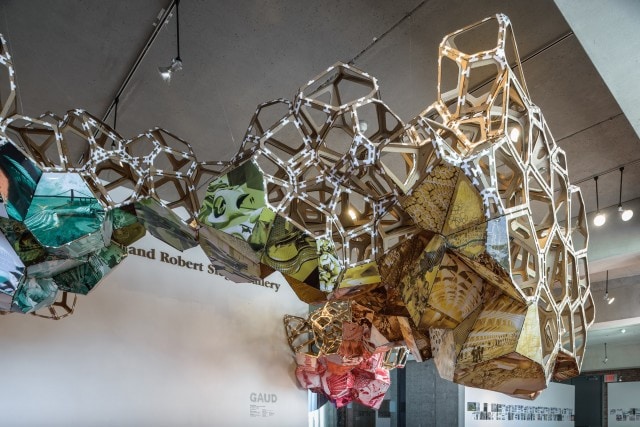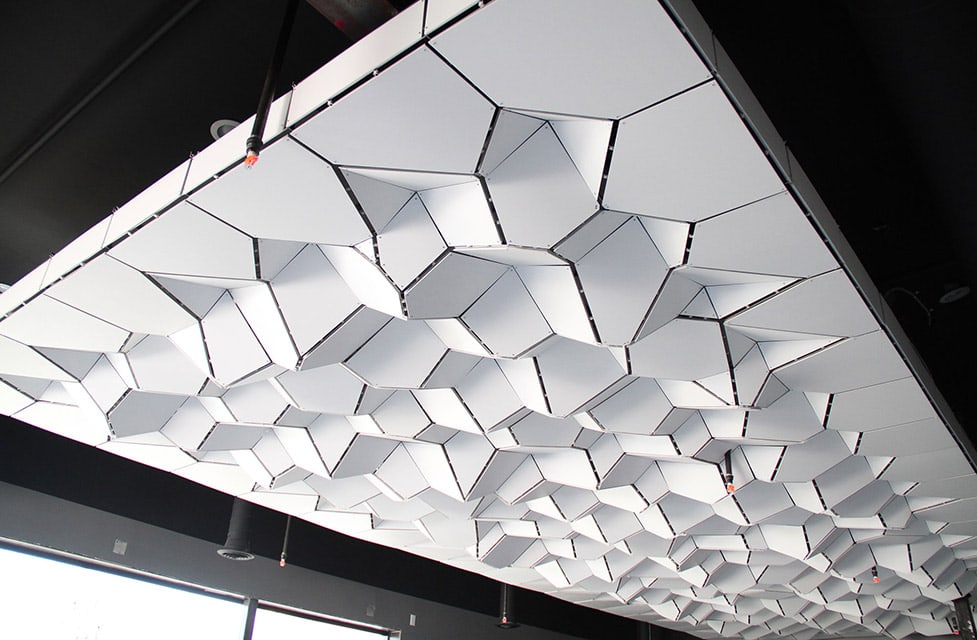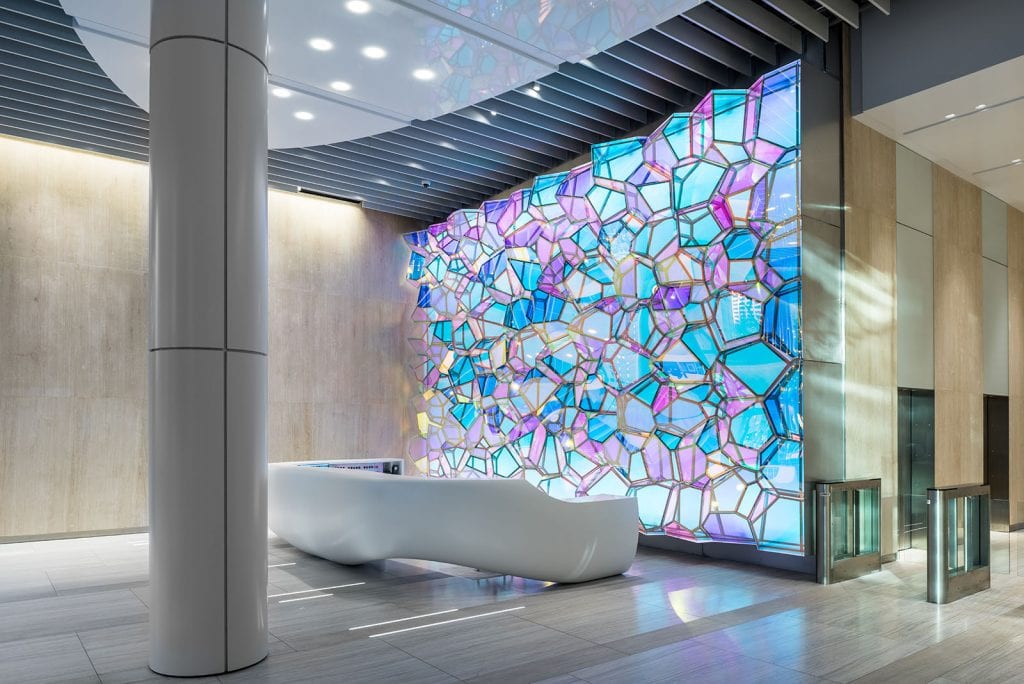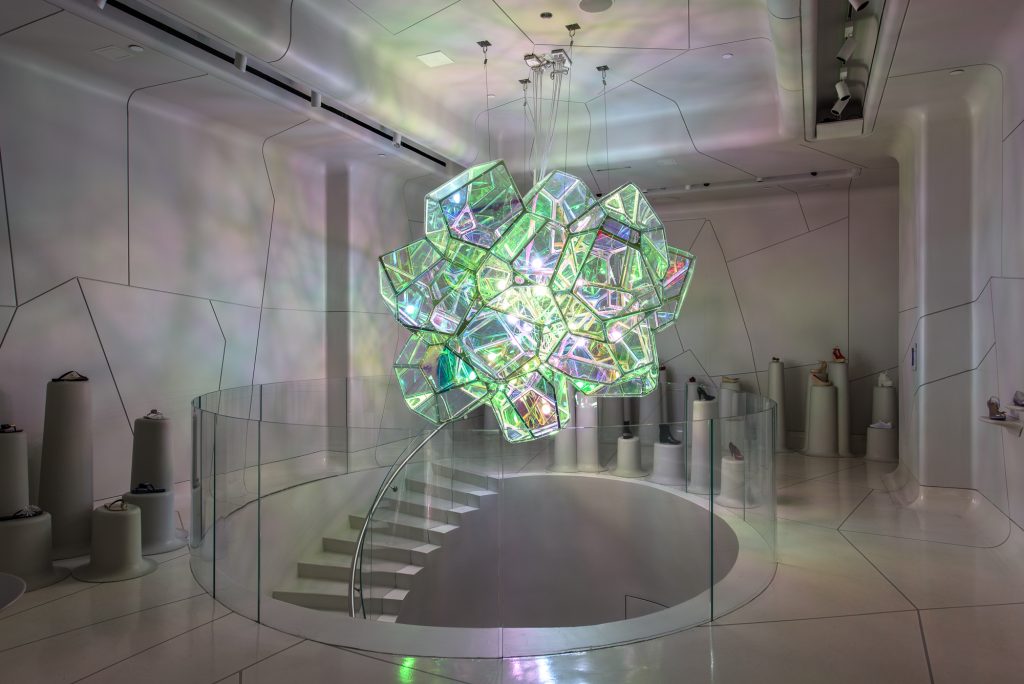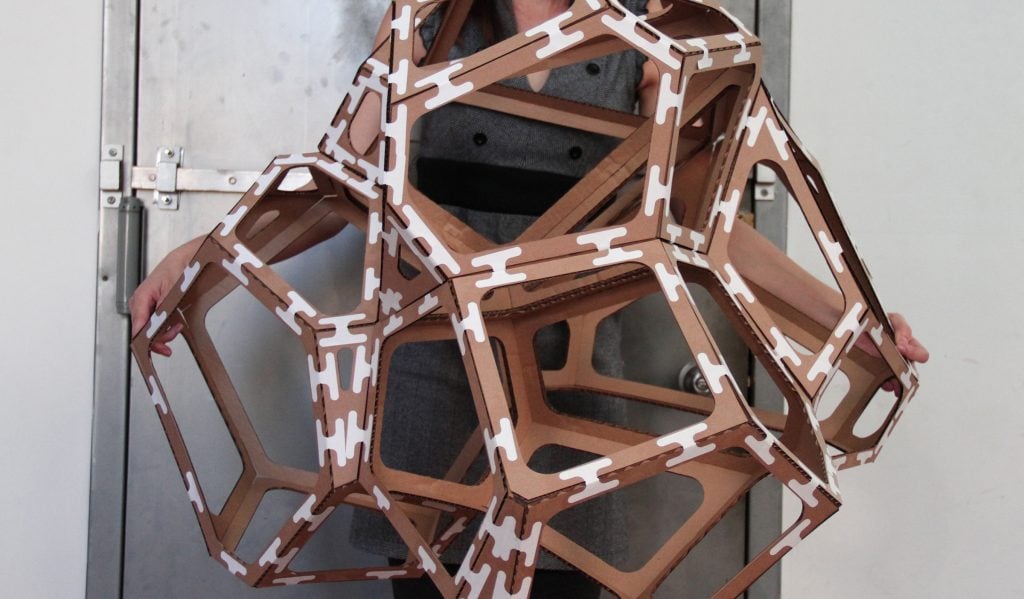
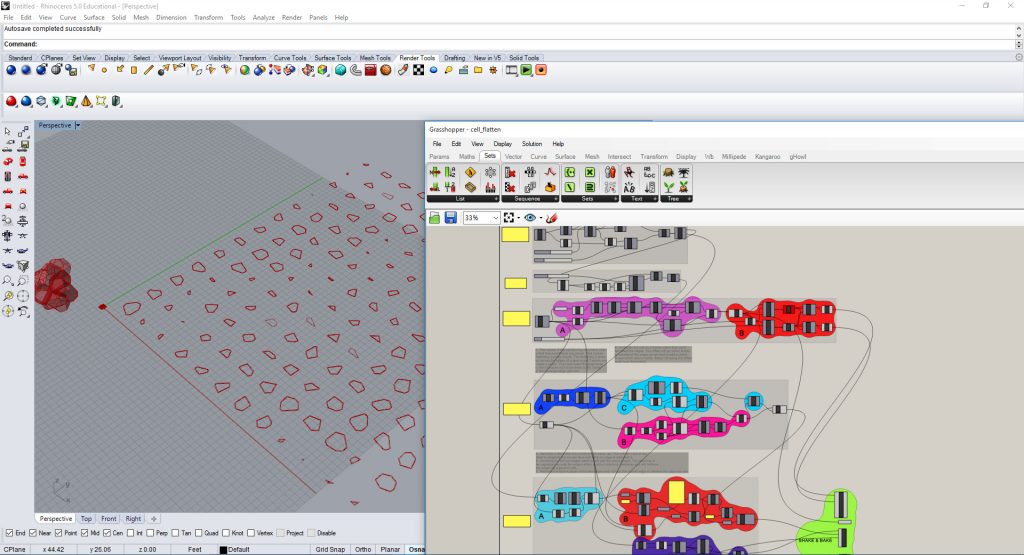
Here is a definition to create panels out of a 3D Voronoi cluster. Creating the panels needed to make the frame is not so difficult. The nature of the voronoir partitioning is that it places a plane in at the midpoint between two points normal to that line and then trims it, so all of the faces are planar. Flattening that is pretty easy as it just needs to be oriented to the XY plane.
The tricky part is the labeling. The strategy for this can a follow a couple of directions. In this definition the cells are all fully built including every face and then connected with shared faces, rather than all cells sharing one common face. We have found that this is easier to construct as the cells are stable when they are separate and act more like bricks. If you have adjacent cells share a common face it means one cell is partially assembled before everything goes together, it is unstable and hard to work with. The connections are difficult because they are all at different angles. A custom connector could be made, but we have found that tape, custom cut vinyl, or zip ties works best. Zip ties are particularly great because they can be tightened. We have used zip ties with an aluminum structure, depending on the specs they can have a greater strength than the shear strength of small bolts. These structures are amazing light for how much volume they take up, similar to a sponge or soap bubbles.
Download the definition: cell_flatten
The basic structure of this definition forms the foundation for how we produce the fabrication files for many of our projects with a cell structure. The details, tolerances, and connection points are all customized based on the specific needs of the material and project.
